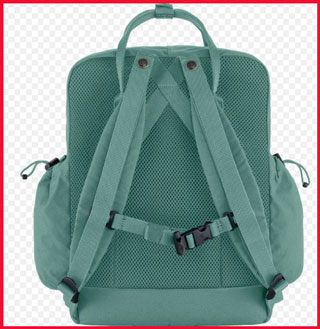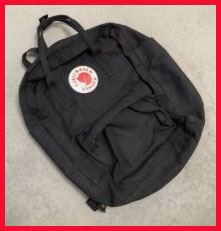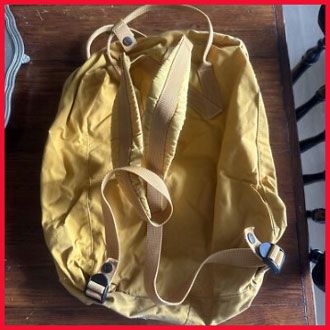I’m on a mission to find the ideal backpack for my daily grind—something stylish, durable, and practical. If you’re like me, you’ve probably narrowed it down to Kipling and Fjällräven, two brands that promise quality but cater to different vibes. In this article, I’ll walk you through my experience comparing these brands, weighing their pros and cons, and highlighting key features to help you decide which one suits your lifestyle. From urban commutes to outdoor adventures, let’s figure out which bag has your back.
A Brief Comparison Table
|xaiArtifact artifact_id=”7a8b9c0d-e29b-41d4-a716-446655440001″ title=”Kipling vs. Fjällräven Comparison Table” contentType=”text/markdown”>
| Feature | Kipling | Fjällräven |
| Price Range | $50–$150 | $70–$300 |
| Material | Nylon, Polyamide | Vinylon F, G-1000, Polyester |
| Style | Casual, playful, urban | Minimalist, Scandinavian, outdoor |
| Durability | Moderate, good for daily use | High, built for rugged conditions |
| Weight | Lightweight (0.5–1.5 lbs) | Heavier (0.8–2.5 lbs) |
| Water Resistance | Water-repellent (not waterproof) | Water-resistant (G-1000 with wax) |
| Capacity | 10–27L | 13–38L |
| Target Audience | Students, urban commuters | Outdoor enthusiasts, minimalists |
| Warranty | 2 years | 1 year (varies by region) |
| Sustainability | Limited eco-friendly options | Strong focus on eco-materials |
| xaiArtifact/> |
My Journey With Kipling And Fjällräven
Read More: My Thought on Fjällräven Vs. Cotopaxi
Let me set the scene: I’m juggling a busy life—work, errands, occasional hikes, and spontaneous coffee runs. My old backpack was falling apart, so I needed a replacement that could keep up. Kipling and Fjällräven kept popping up in my searches, each with a loyal fanbase. I decided to test both brands, using their bags in real-world scenarios to see which one fits my needs—and maybe yours too. Here’s what I found after weeks of carrying, packing, and occasionally overstuffing these bags.
Kipling: The Playful, Urban Companion

Kipling bags are like that friend who’s always up for a good time—fun, approachable, and easy to get along with. Founded in 1987 in Antwerp, Belgium, Kipling’s known for its lightweight nylon bags, often adorned with a signature monkey keychain that’s become a quirky hallmark. I picked up a Kipling City Pack Mini to test its urban prowess.
Key Features Of Kipling
The City Pack Mini is a 14-liter backpack, perfect for my daily commute. It’s made of crinkly nylon, which feels soft yet sturdy. The bag has a padded back panel, adjustable straps, and multiple compartments, including a front zip pocket and two side pockets. I loved the internal organization—there’s a spot for my laptop (up to 13 inches), phone, and even a small water bottle. The monkey keychain? Adorable, though I caught myself fiddling with it during boring meetings.
What stood out was how lightweight it is—barely 1 pound. I could toss it over one shoulder and forget it was there. The water-repellent material handled light rain without soaking my stuff, but I wouldn’t trust it in a downpour. The design is casual, with bold colors like True Blue and Dazzling Pink that scream personality. I chose a neutral black to keep it professional, but the playful vibe still shone through.
Pros Of Kipling
- Affordable Price Point: At $99 for the City Pack Mini, Kipling won’t break the bank. Most of their bags range from $50 to $150, making them accessible for students or anyone on a budget.
- Lightweight Design: Carrying it for hours felt effortless, even when packed with my laptop, charger, and lunch.
- Fun Aesthetic: The vibrant colors and monkey mascot add a youthful, cheerful vibe that’s great for casual settings.
- Organization Galore: Multiple pockets and compartments made it easy to stay organized, especially for small items like pens or keys.
- Comfort for Daily Use: The padded straps and back panel were comfy for short commutes, though not ideal for heavy loads.
Cons Of Kipling
- Limited Durability: The nylon is tough for everyday use, but after a few weeks, I noticed minor wear on the zippers. It’s not built for rugged adventures.
- Not Fully Waterproof: Light rain is fine, but heavy storms? You’ll need a rain cover or risk soggy contents.
- Smaller Capacity: The 14-liter size was great for city life but felt cramped for weekend trips or bulkier items.
- Basic Sustainability: Kipling’s eco-efforts are minimal. They’ve introduced some recycled materials, but it’s not a core focus.
- Casual Vibe Limits Versatility: The playful design didn’t always feel right for professional settings, despite my neutral color choice.
Fjällräven: The Rugged, Eco-Conscious Explorer
Switching gears, I tested the Fjällräven Kånken 16L, a cult favorite since its debut in 1978. Fjällräven, a Swedish brand, is all about functional minimalism with a nod to sustainability. The Kånken’s boxy, utilitarian look caught my eye, and I was curious if it could handle both my city routine and occasional outdoor escapes.
Key Features Of Fjällräven

The Kånken is made from Vinylon F, a synthetic material that’s lightweight yet durable. It feels almost canvas-like but resists water better than expected. I also tried a G-1000 version (Fjällräven’s proprietary fabric), which you can wax for extra water resistance. The 16-liter capacity held my essentials—laptop, notebook, snacks—though it’s less compartmentalized than Kipling. The iconic square shape and leather logo give it a timeless, Scandinavian aesthetic. It’s heavier than the Kipling at about 1.3 pounds, but the padded straps made it comfortable for longer wear.
What surprised me was the removable seat pad—a quirky feature for impromptu picnics or hikes. The side pockets fit a water bottle snugly, and the front zip pocket was handy for quick-access items. Fjällräven’s commitment to sustainability shone through; many bags use recycled polyester or organic cotton, and the brand emphasizes repairability to extend product life.
Pros Of Fjällräven
- Exceptional Durability: The Vinylon F and G-1000 materials are built to last. After weeks of use, my Kånken showed no signs of wear, even after a muddy hike.
- Water Resistance: The waxed G-1000 version laughed off rain, and even the standard Vinylon F held up better than Kipling in wet conditions.
- Sustainable Focus: Fjällräven’s eco-friendly materials and repair programs align with my values as someone trying to shop consciously.
- Versatile Style: The minimalist design works for both urban commutes and outdoor adventures, blending seamlessly into different settings.
- Larger Capacity Options: Models like the Kånken Laptop (up to 18L) or Raven (28L) offer more space for travel or bulkier gear.
Cons Of Fjällräven
- Higher Price Tag: At $90–$300, Fjällräven is pricier. My Kånken was $90, but premium models like the Raven cost significantly more.
- Heavier Weight: The Kånken’s 1.3 pounds felt noticeable compared to Kipling’s featherlight design, especially when fully packed.
- Limited Organization: Fewer pockets meant I had to dig for smaller items, which got annoying during busy days.
- Learning Curve for Care: Waxing the G-1000 fabric for water resistance takes effort, and I wasn’t thrilled about the maintenance.
- Shorter Warranty: The one-year warranty (in some regions) felt stingy compared to Kipling’s two years.
Head-To-Head: Breaking Down The Differences
Now that I’ve lived with both bags, let’s compare them across key factors to help you decide.
Price and Value

Kipling is the budget-friendly choice. Most of their bags cost $50–$150, and you get solid quality for the price. The City Pack Mini at $99 felt like a steal for its features. Fjällräven, on the other hand, commands a premium, with prices from $70 to $300. The Kånken’s $90 price tag is reasonable, but larger models like the Raven push the budget. If you’re watching your wallet, Kipling offers great value. But if you’re investing in a long-term companion, Fjällräven’s durability justifies the cost.
Material and Durability
Kipling’s nylon is lightweight and water-repellent, but it’s not indestructible. After a month, I noticed fraying near the zippers, especially when I overpacked. Fjällräven’s Vinylon F and G-1000 fabrics are tougher. My Kånken survived a muddy trail and still looked pristine. For city dwellers, Kipling’s durability is sufficient, but Fjällräven is the clear winner for rugged use.
Style and Aesthetic
Kipling’s playful, colorful designs are perfect if you want to stand out. The monkey keychain and bold hues like Dazzling Pink add personality, but they can feel juvenile in formal settings. Fjällräven’s minimalist, boxy aesthetic is versatile—my Kånken worked at the office and on a hike. If you prefer understated elegance, Fjällräven’s Scandinavian vibe is hard to beat.
Comfort and Ergonomics
Both brands prioritize comfort, but they cater to different needs. Kipling’s lightweight design and padded straps made it ideal for short commutes. I barely felt the City Pack Mini during my 30-minute subway rides. Fjällräven’s Kånken was slightly heavier, but the padded straps and sturdier back panel handled heavier loads better. For long treks or heavy gear, Fjällräven has the edge.
Capacity and Organization
Kipling shines for organization. The City Pack Mini’s multiple pockets kept my life in order—phone, keys, and snacks all had their place. Fjällräven’s Kånken, with its open main compartment, felt less structured. I often rummaged for small items, which was frustrating. However, Fjällräven offers larger options (up to 38L), while Kipling maxes out at 27L. If you need space for travel, Fjällräven has more flexibility.
Water Resistance
Neither brand is fully waterproof, but Fjällräven takes the lead. The Kånken’s Vinylon F repelled light rain, and the waxed G-1000 version handled heavier showers. Kipling’s nylon kept my stuff dry in a drizzle, but I wouldn’t trust it in a storm without a rain cover. If weather resistance is a priority, Fjällräven is the safer bet.
Sustainability
Fjällräven is a standout here. Their use of recycled materials, organic cotton, and repair programs shows a commitment to the planet. Kipling has some recycled nylon options, but their sustainability efforts feel like an afterthought. If eco-conscious shopping matters to you, Fjällräven aligns better with those values.
Real-World Testing: How They Held Up
To get a true sense of these bags, I put them through my daily routine. Mornings involved a subway commute with my laptop, notebook, and coffee tumbler. Weekends meant hikes or picnics with friends, where I packed extra clothes and snacks.
The Kipling City Pack Mini was a dream for commuting. Its lightweight build and organized pockets made my mornings stress-free. I could grab my MetroCard from the front pocket without digging. But when I took it on a weekend hike, it felt out of its depth. The straps dug in under a heavier load, and a sudden rain left me scrambling to protect my gear.
The Fjällräven Kånken was a different story. On commutes, it was slightly heavier, and I missed Kipling’s pocket organization. But it shone on outdoor trips. The durable Vinylon F handled rough trails, and the seat pad was a lifesaver during a chilly picnic. Rain didn’t faze it, and the minimalist look earned compliments at both the office and the trailhead.
Who Are These Bags For?

Kipling is your go-to if you’re a student, urban commuter, or someone who loves a pop of personality. It’s perfect for light daily use—think school, work, or casual outings. The affordability and organization make it a practical choice for budget-conscious folks who don’t need heavy-duty gear.
Fjällräven suits outdoor enthusiasts, minimalists, or anyone who values durability and sustainability. It’s ideal for those who split their time between city life and nature, or who want a bag that lasts years. The higher price and simpler organization might not suit everyone, but it’s a worthwhile investment for rugged use.
My Verdict: Which One Wins?
Choosing between Kipling and Fjällräven depends on your lifestyle. If you’re all about affordability, lightweight comfort, and urban flair, Kipling’s your match. Its playful designs and wallet-friendly prices make it a no-brainer for city dwellers or students. But if durability, sustainability, and versatility are your priorities, Fjällräven steals the show. Its rugged build and eco-conscious ethos won me over for mixed-use scenarios, though I wish it had more pockets.
For me, the Fjällräven Kånken edged out slightly because it handled both my commutes and hikes without missing a beat. But I still keep my Kipling for days when I want something lighter and more organized. You can’t go wrong with either—just pick the one that fits your vibe and needs.
Frequently Asked Questions
Fjällräven is premium but not luxury. Its prices ($70–$300) reflect durable materials and sustainable practices, positioning it above budget brands but below high-end designer labels.
Brands like Herschel, Eastpak, and JanSport offer similar casual, affordable, and lightweight backpacks with playful or urban designs, perfect for students and commuters.
Kipling bags are known for their lightweight nylon construction, vibrant colors, and iconic monkey keychain, blending practicality with a fun, youthful aesthetic.
Fjällräven operates under the Fenix Outdoor Group, with sister brands like Primus (camping gear), Hanwag (footwear), and Tierra (outdoor apparel).
Conclusion: Your Bag, Your Choice
Read More: My Thought on Fjällräven Vs. Cotopaxi
You’re now armed with the full scoop on Kipling and Fjällräven. I’ve carried both through city streets and muddy trails, and each has its charm. Kipling’s budget-friendly, organized, and playful bags are perfect if you want a lightweight companion for urban life. Fjällräven’s durable, eco-conscious designs are built for adventure and longevity, though they come at a higher cost. Think about your daily routine, budget, and style—then choose the bag that feels like your partner in crime. Happy carrying!
